リズ・トーマスのハイキング・アズ・ア・ウーマン#18 / アメリカにおけるロング・ディスタンス・ハイカーのイベント
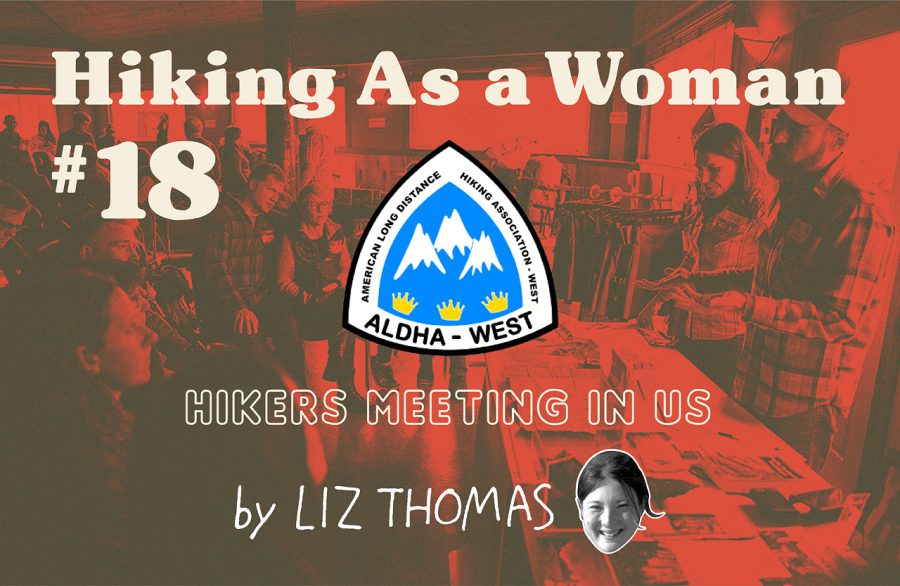
What does Long Distance Hiker’s Day look like in America?
In Japan, each year, hikers learn from each other and share trail stories at Long Distance Hiker’s Day. In America, we also have a winter gathering of hikers who are preparing to hike a long distance trail. Here, we call it a “Ruck” after the term “Rucksack.” The American Long Distance Hiking Association-West and the Appalachian Long Distance Hiking Association hold Rucks in at least six different U.S. states each year.
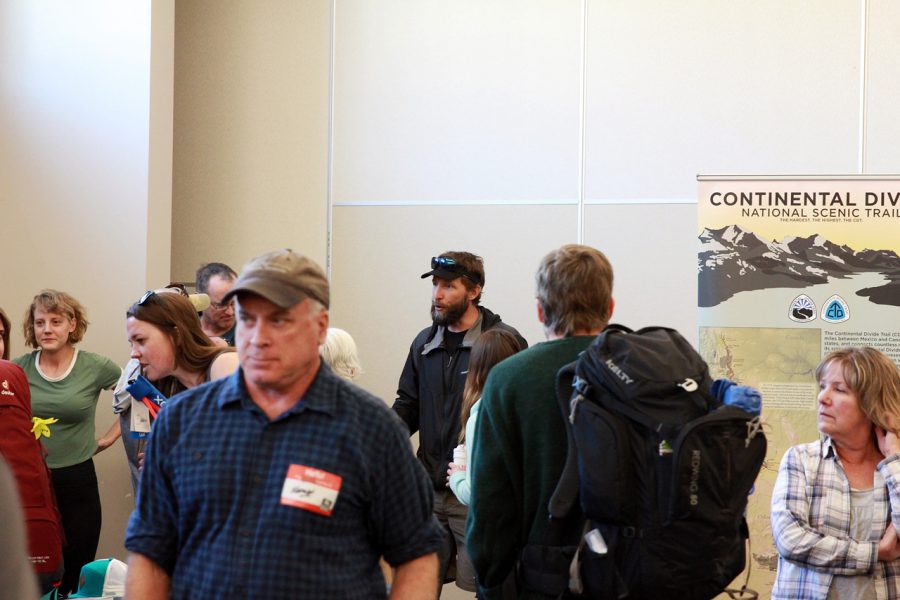
In this article, I will describe what we at the American Long Distance Hiking Association-West teach and learn from one another at a Ruck. Although I have not yet been to Long Distance Hiker’s Day in Japan, I am curious how the Ruck is the same and different from its sister event in Japan. Maybe one day hikers in Japan and America can compare teaching and training techniques and learn from each other.
When planning to hike a long trail, the best way to prepare is to talk to other people who have hiked a long trail. Reading books and reading blogs can be helpful, but most new hikers find it inspiring and informative to have an actual person tell them about their distance hiking experience. The Ruck is a useful gathering for past distance hikers and future distance hikers to discuss all things trail. Past hikers will gather to see old friends and plan for a bigger or more difficult trip. Past hikers come to the event for fellowship and to give back to the hiking community. Future hikers come to the Ruck to try to learn as much as possible from those who have already experienced a long trail.
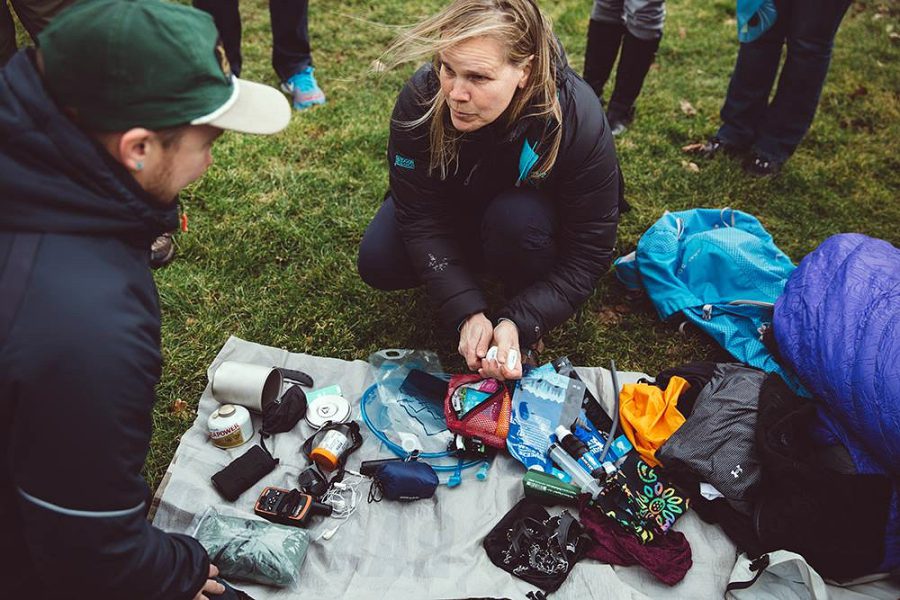
The Ruck starts in the morning with breakfast and mingling time. For many new hikers, coming to an event where they don’t know anyone can be intimidating. Trail greeters welcome new hikers as they enter the building and answer their questions. The distance hiking community is small. Anyone who wants to spend a Saturday learning about thru-hiking is a welcome addition to our group.
Hikers who are about to start a trail have many questions about ultralight gear. Although most gear companies sell on the internet, many small companies choose to come to the Ruck to give hikers an opportunity to see and touch ultralight gear firsthand. Past and future hikers enjoy seeing the newest designs and fabrics. They can also fit packs and see how they carry loads or determine if a sleeping bag is too narrow or wide. Some past hikers may choose to sell their old gear at the Ruck, which is a rare opportunity for new hikers to get a discount on ultralight gear.
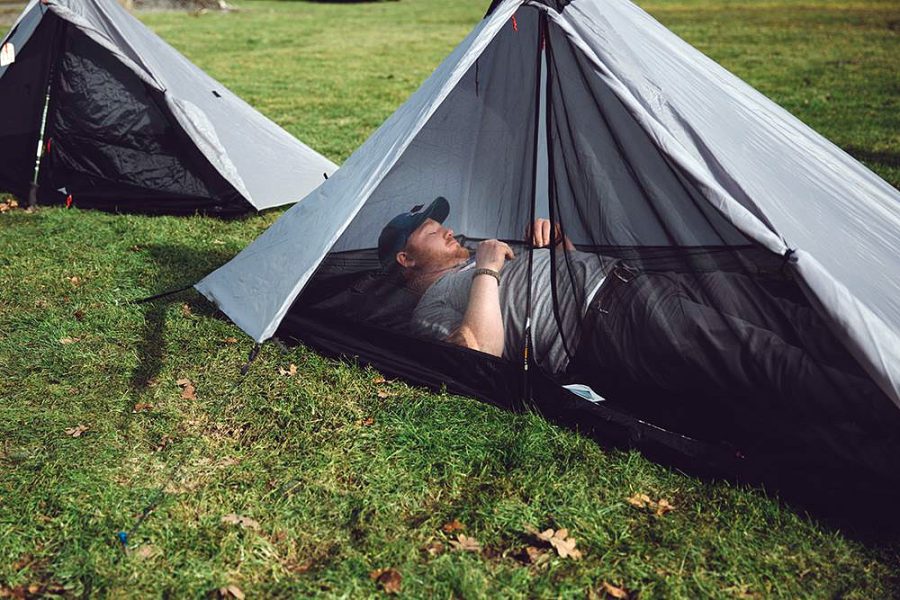
For distance hikers who have already acquired their gear, the Ruck is a chance to have a more advanced hiker critique their gear kit. We call this process the “Pack Shakedown.” Newer hikers will bring their fully loaded backpack to the event. For an hour, an experienced hiker will go through every item in the backpack and do a one-on-one discussion of why that item is in the pack and whether there are lighter weight alternatives. The process is informative for many future hikers, but it can be intimidating. Those who are leading the shakedown are trained to ask questions and be respectful of gear choices that others make. The process is meant to make new hikers think about how their gear will serve them (or will weigh them down) on a long trip.
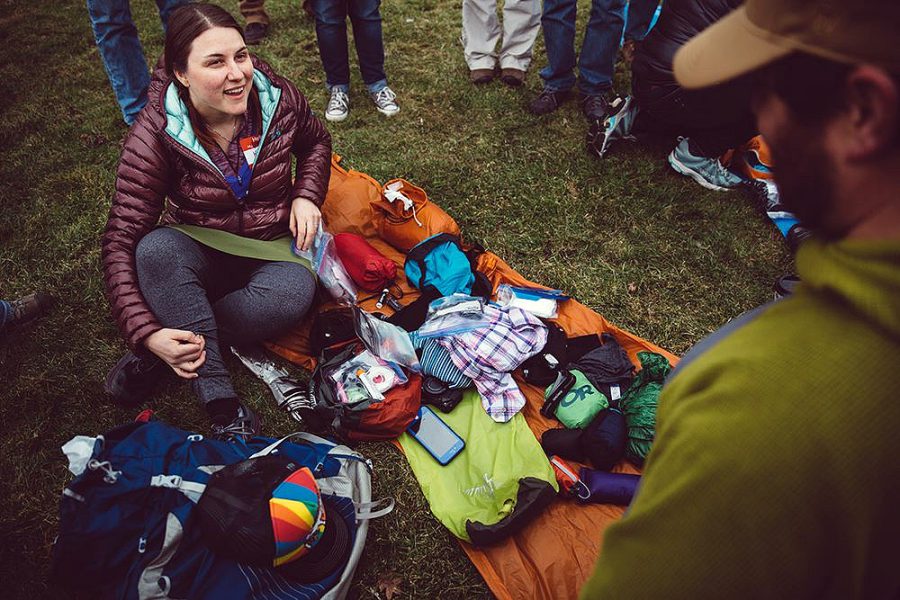
One of the most important messages of the Ruck is that there are many ways to hike a long distance trail. Not everyone carries the same pack. Not everyone eats the same kind of food. Not everyone hikes the same speed.
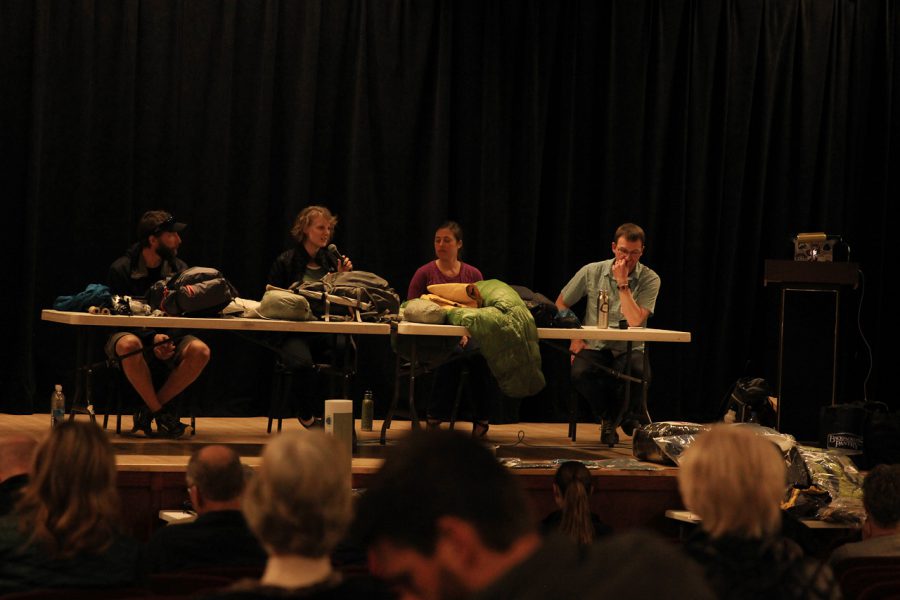
During the gear section, three different hikers will sit on a panel and each will explain what gear they use and why. One person may carry more traditional gear, one person may be an ultralighter, and someone may be in between. This shows future hikers that there are many different kinds of gear kits that can be successful on a thru-hike.
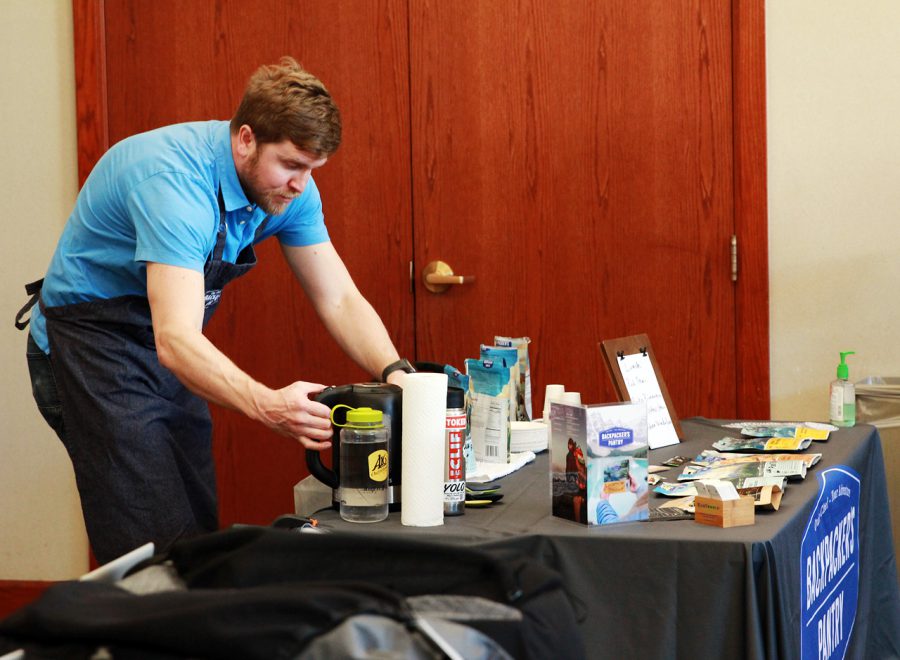
Similarly, during the nutrition and food panel, three hikers will bring their food bag of what they would eat for 7 days on trail. One person may be a healthy hiker. Another hiker may eat nothing but junk food like cookies and chips. Another hiker may not use a stove and instead will cold soak their dinners each night. A hiker on the panel may be vegetarian or vegan.
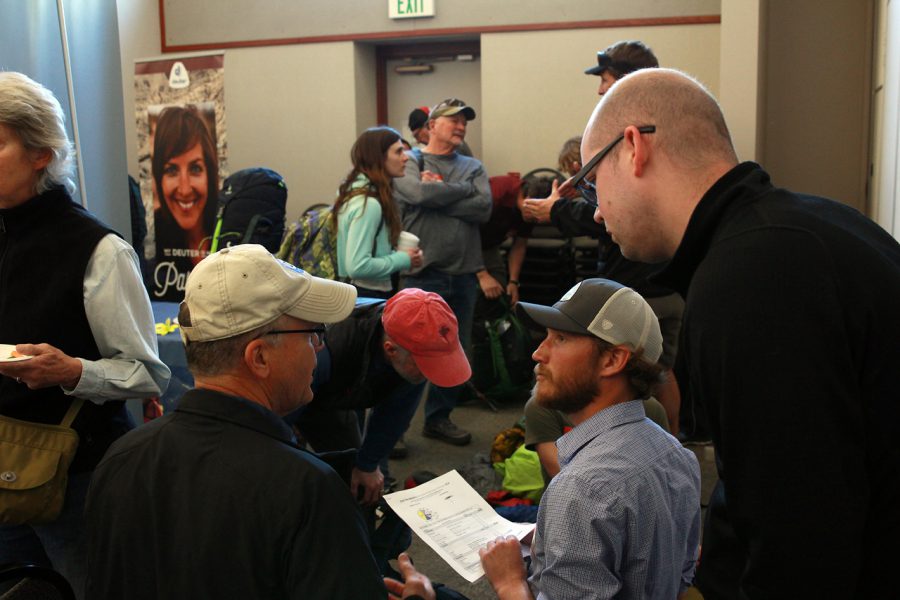
Resupplying and getting more food and gear items during a long hike can be mysterious and intimidating to many first time hikers. We discuss different methods to resupply food and gear during a long distance hike. Some hikers send themselves food boxes to Post Offices near the trail. Other hikers dislike sending boxes and find the process expensive, so only buy at grocery or gear stores in towns along the trail, even if the options aren’t as good. Some hikers do a little bit of both methods.
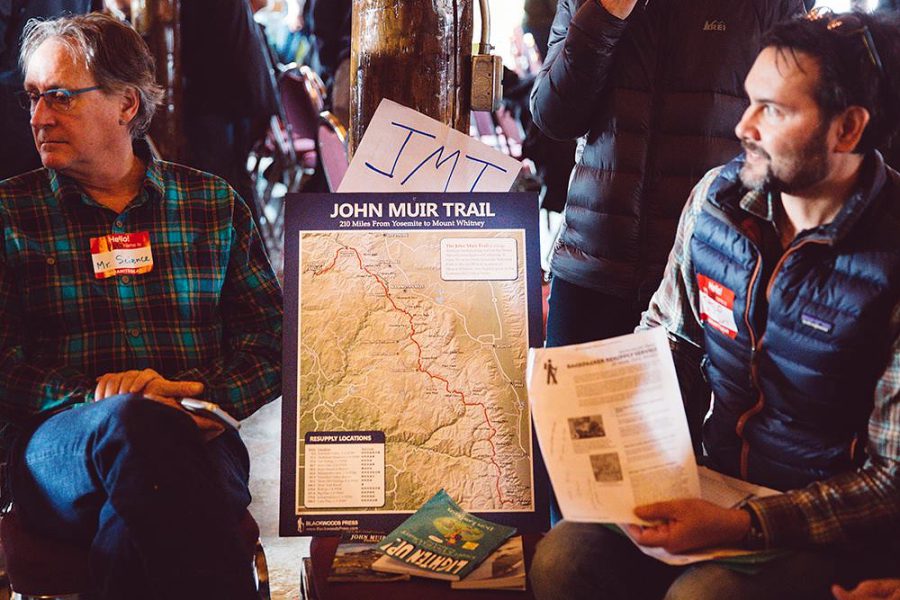
Although phone apps have made navigating long distance trails easier, most new hikers enjoy learning how the app works and what it is capable of. Many new hikers aren’t even aware that apps exist and of all the features of trail planning that can now be done in an app. We also teach some map and compass skills for navigation on distance hikes.
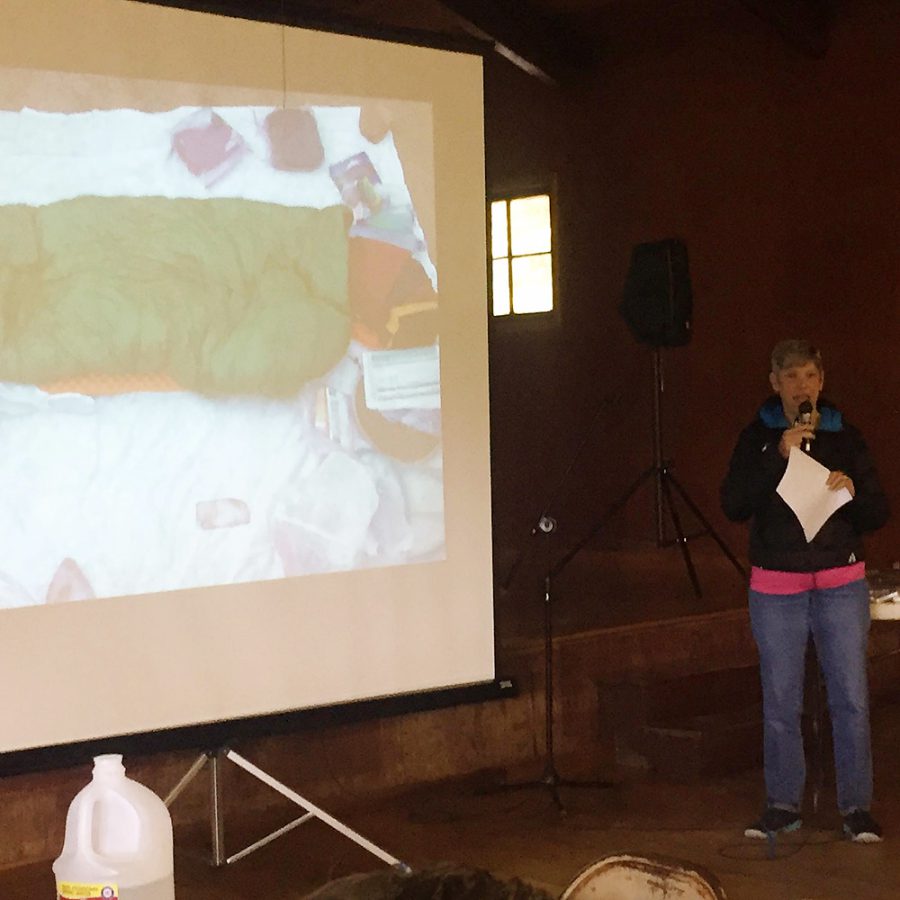
For those who are hiking American trails, it is important to learn the ethics of the land. At each Ruck, we dedicate time to teach Leave No Trace: the principle of taking only photos and leaving only footprints when in nature. Hikers are taught to carry their trash with them, be respectful of other users, and correctly bury their waste. They are also taught how to be careful when building fires in dry and fire-prone places like California. We also teach distance hikers how to be respectful to trail angels and people who live in towns along trails.
One of the most difficult parts of planning for a long hike are arranging finances, budgeting, and funding a hike. A panel of hikers from different professional backgrounds talk about how they were able to take time to go on a distance hike and save money to travel. Panelists also talk about what they do with their apartment, belongings, and pets while they are away. They also discuss how to pay bills that don’t go away (like loan payments or phone bills) while on the trail.
Sometimes the worst part of planning for a hike is not knowing what you don’t know. We lead a discussion on the largest dangers of a hike—often things that new hikers may not even realize are dangers.
We teach hikers to have an emergency contact. Distance hikers should check in with a person at home every time they have reception so that another person is aware of their whereabouts. That person should also have a copy of the hiker’s itinerary.
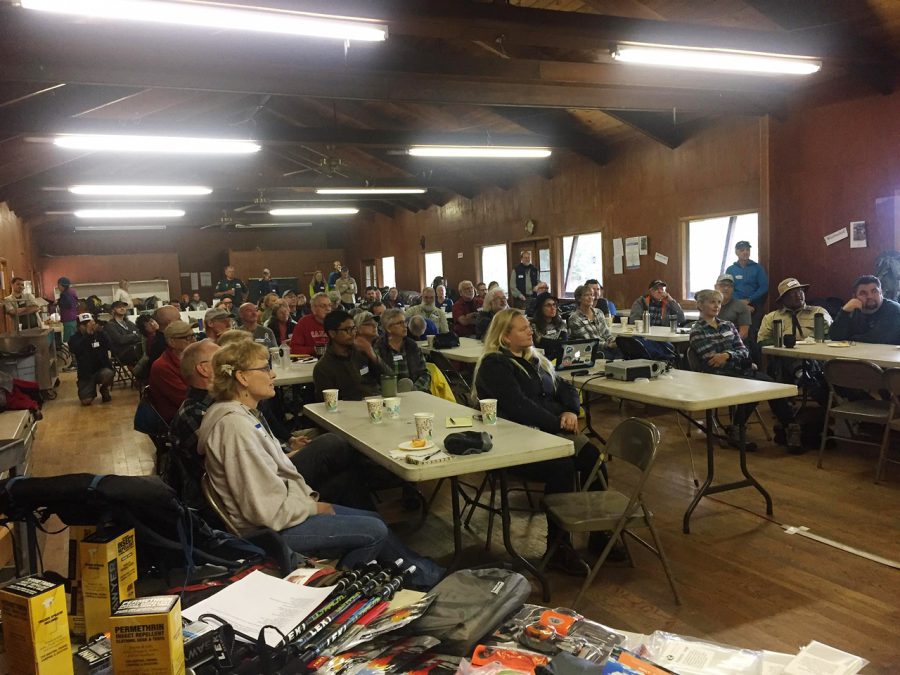
Environmental factors cause discomfort to humans and are responsible for many life-or-death situations on distance trails. Ideally, every hiker could take a swift water rescue or snow mountaineering course before their trek. In reality, the Ruck is the time when most hikers learn how to ford a river or cross snowy mountain slopes. We discuss which gear to carry through snowy sections of trails including ice axes, snowshoes, sunglasses and sunscreen, and traction devices.
On a trail like the PCT, the desert heat and dehydration forces many people to be rescued. We discuss methods to deal with the heat like starting early in the morning, taking a nap in the heat of the day, and hiking late in the evening. We also teach “cameling up,” the process of drinking lots of water at creeks before loading up water bottles to their full capacity.
Lastly, we hold break-out sessions where hikers can sit in a small group with other hikers who are planning to walk the same trail. Everyone who is planning to hike the PCT gets together in a small group led by individuals who hiked the PCT the previous year. The hikers who want to see the JMT gather around other hikers who just traveled there the year before. This is an opportunity to ask questions specific to that trail like permits, snow levels, mosquitos, bugs, and resupply options.
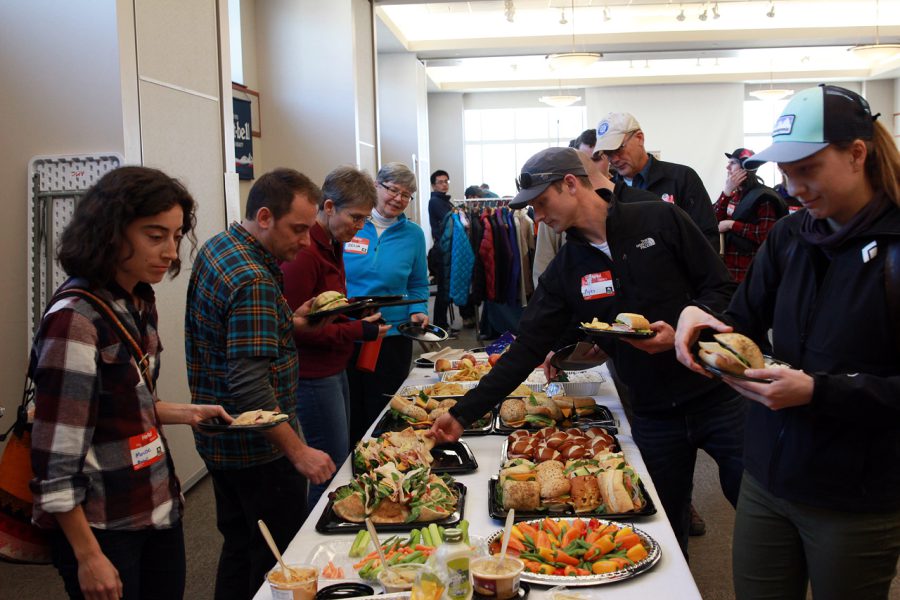
The event closes with a gear raffle and happy hour. The mingling during the end of the event serves as a time for folks to ask questions they may not have had time to ask earlier in the day. It’s also a time when experienced hikers can connect and find new hiking partners for ambitious trips.
While it’s impossible to share everything that a new hiker needs to learn in one day, the Ruck is a way to make hikers feel more confident about the trip they have planned. Because it happens months before hiking season, it gives them ideas of what they need to learn more about, what they should focus on, and how better to spend the time preparing.
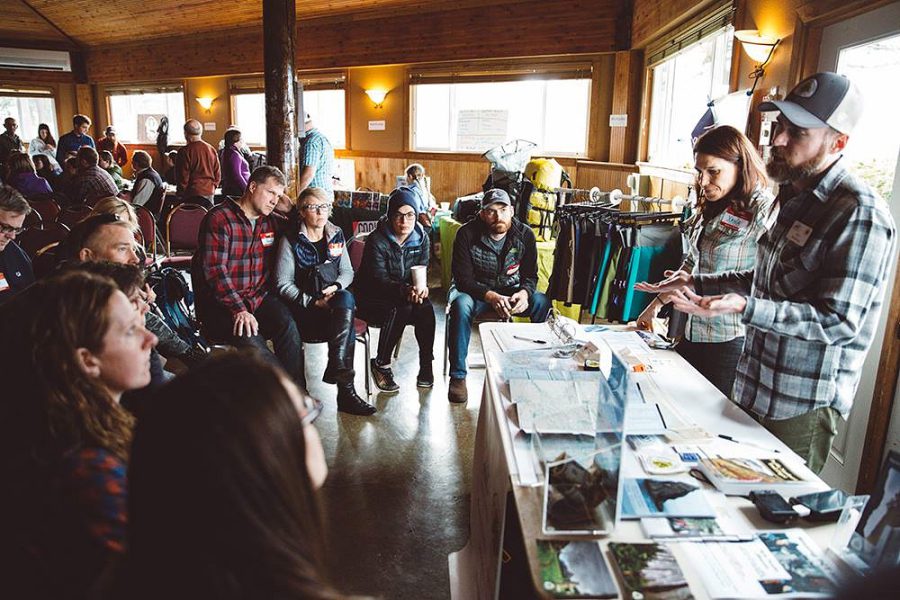
I’m curious what Long Distance Hikers Day is like in Japan. Perhaps there are more discussions about visas or cross-cultural exchanges. One day, I hope that those of us whom organize the Ruck in America can share with the organizers of Long Distance Hiker Day so we can learn from each other on how to prepare new distance hikers.
Related Articles
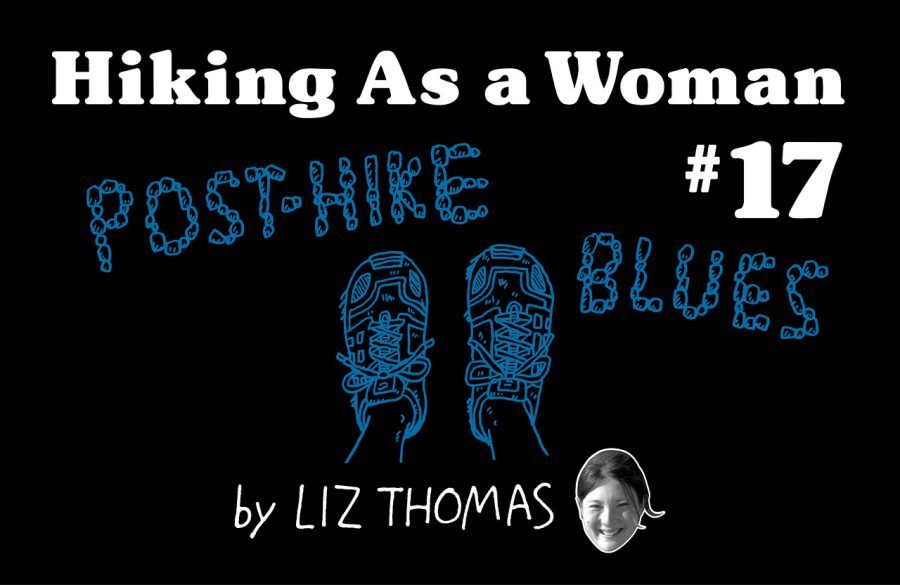
リズ・トーマスのハイキング・アズ・ア・ウーマン#17 / ロング・ディスタンス・ハイキング後の喪失感との向き合い方
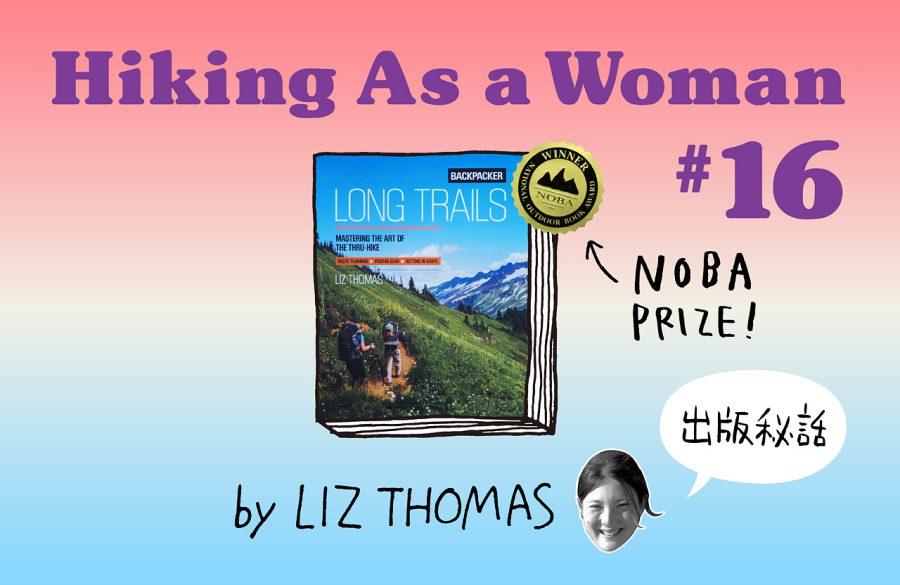
リズ・トーマスのハイキング・アズ・ア・ウーマン#16 / 『LONG TRAILS 〜スルーハイキングの極意〜』を出版!
- « 前へ
- 2 / 2
- 次へ »
TAGS:

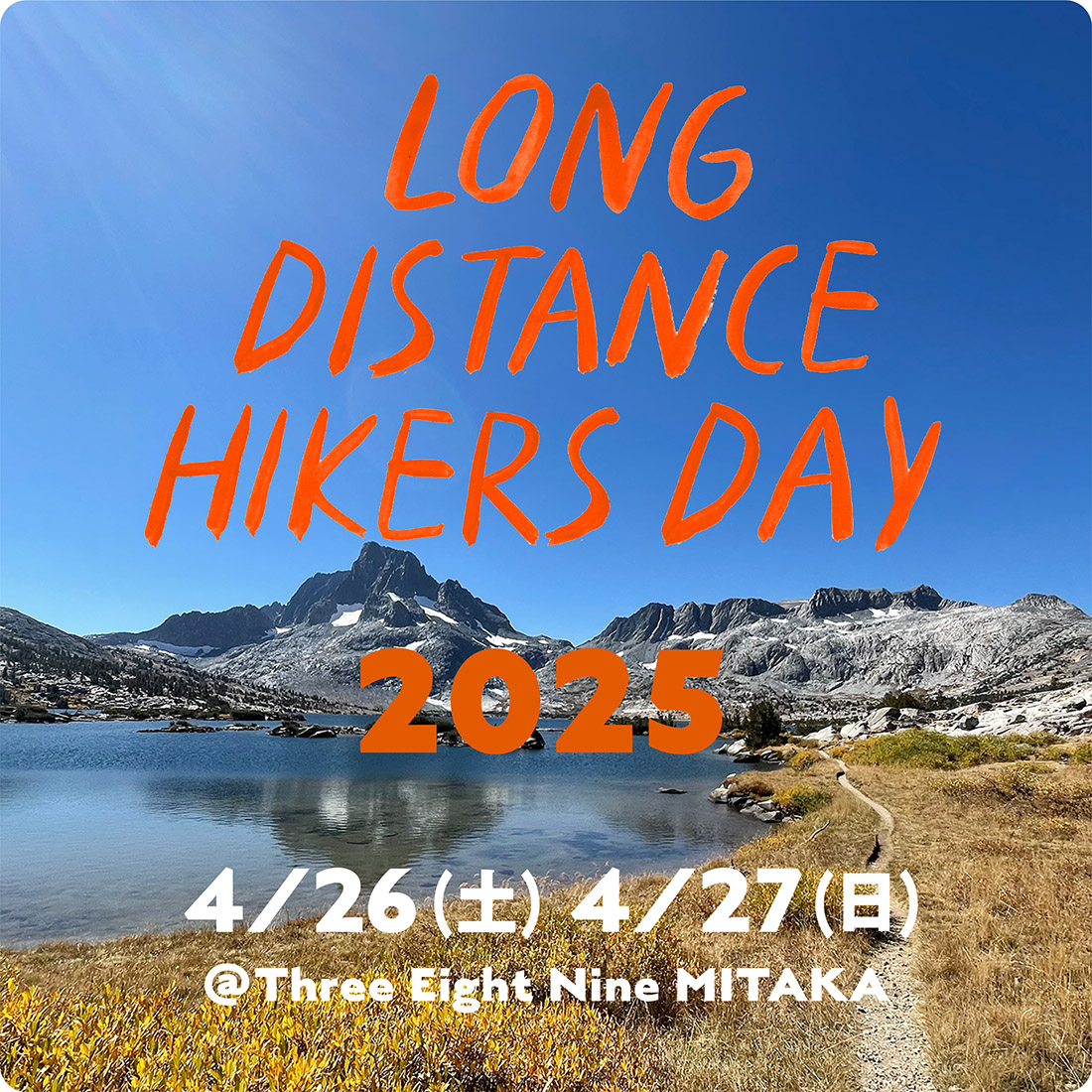
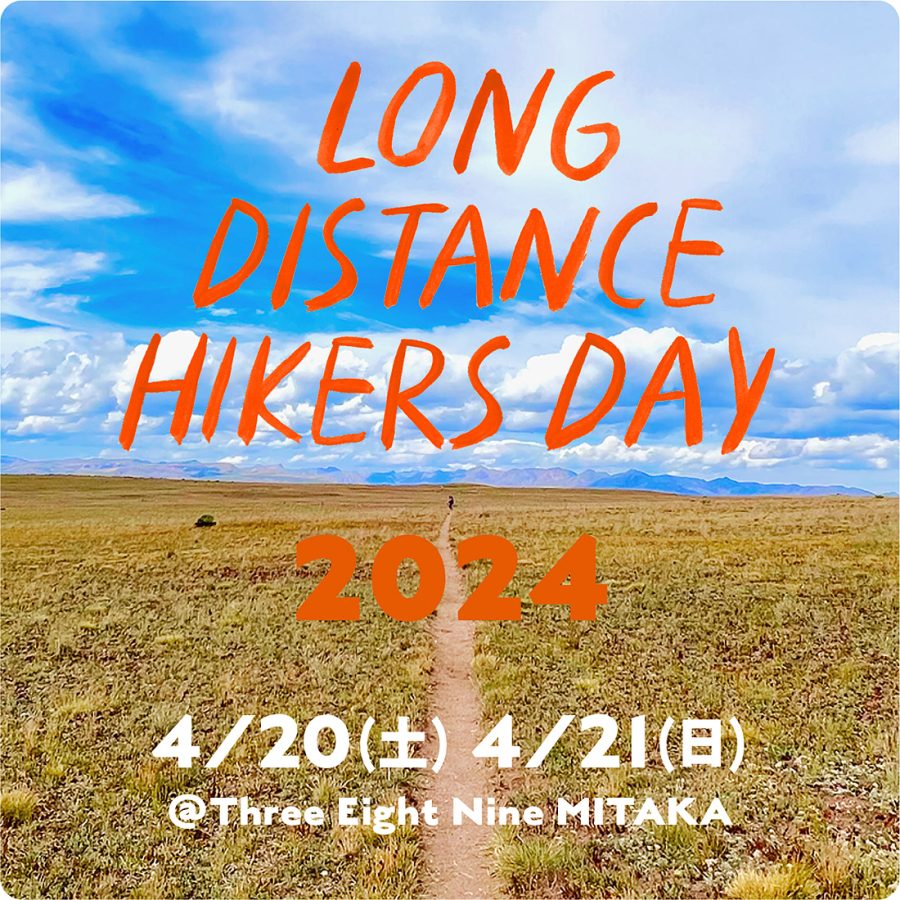
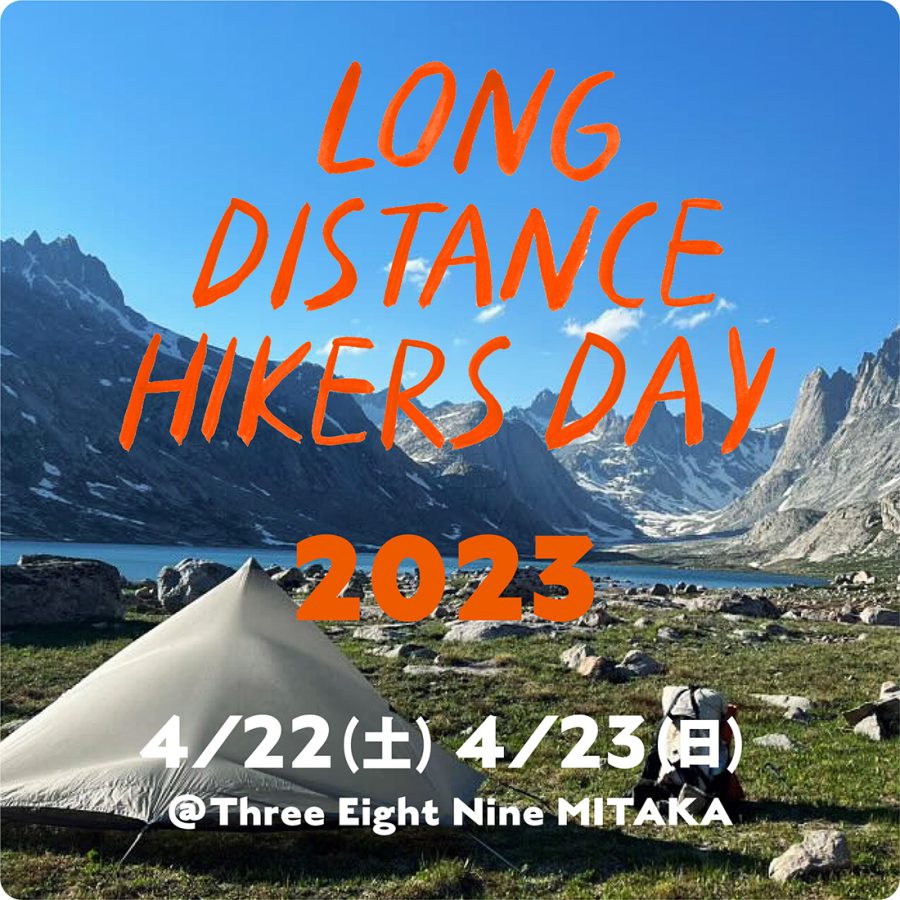










 ULギアを自作するための生地、プラパーツ、ジッパー…
ULギアを自作するための生地、プラパーツ、ジッパー…  ZimmerBuilt | TailWater P…
ZimmerBuilt | TailWater P…  ZimmerBuilt | PocketWater…
ZimmerBuilt | PocketWater…  ZimmerBuilt | DeadDrift P…
ZimmerBuilt | DeadDrift P…  ZimmerBuilt | Arrowood Ch…
ZimmerBuilt | Arrowood Ch…  ZimmerBuilt | SplitShot C…
ZimmerBuilt | SplitShot C…  ZimmerBuilt | Darter Pack…
ZimmerBuilt | Darter Pack…  ZimmerBuilt | QuickDraw (…
ZimmerBuilt | QuickDraw (…  ZimmerBuilt | Micro Pack …
ZimmerBuilt | Micro Pack … 














